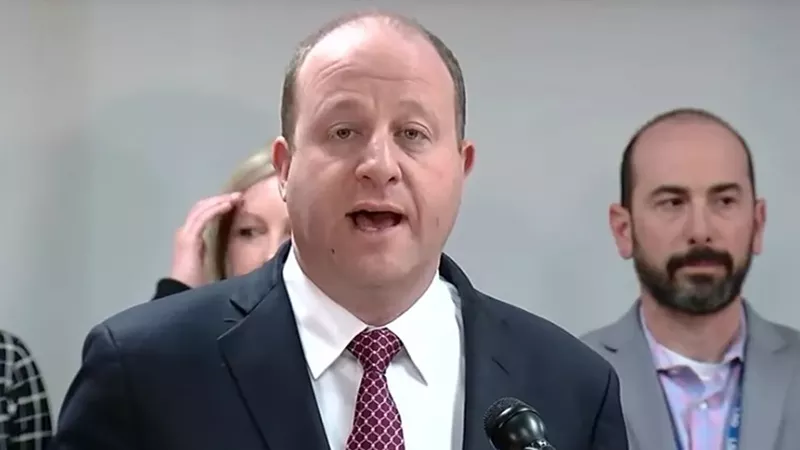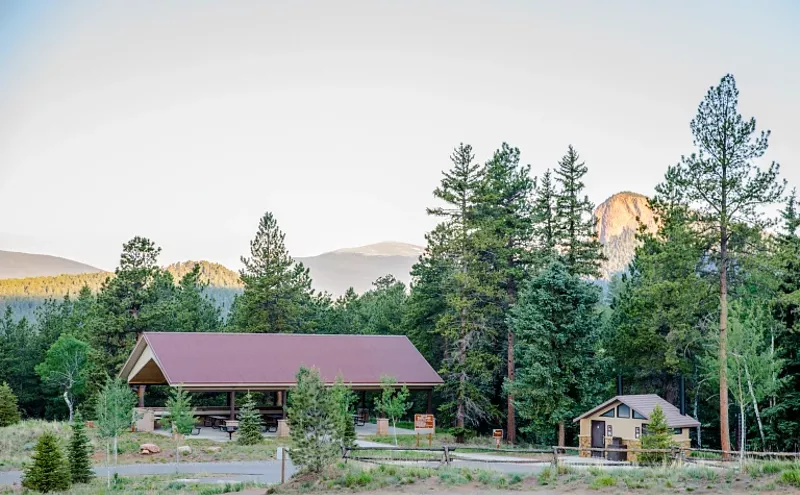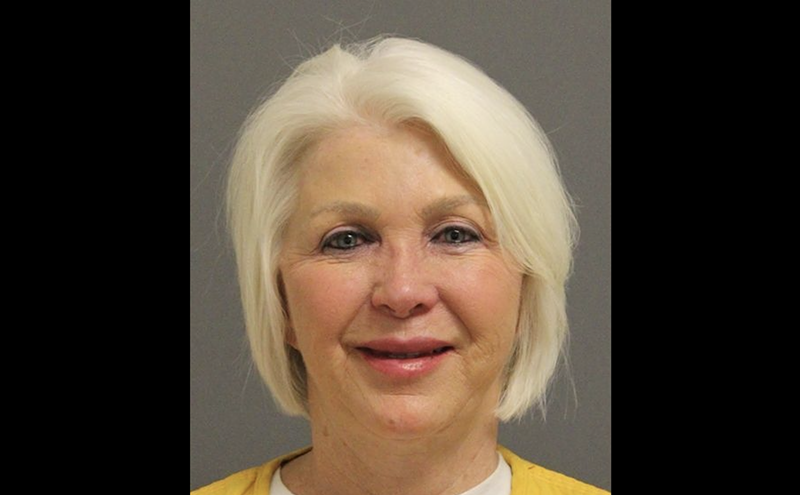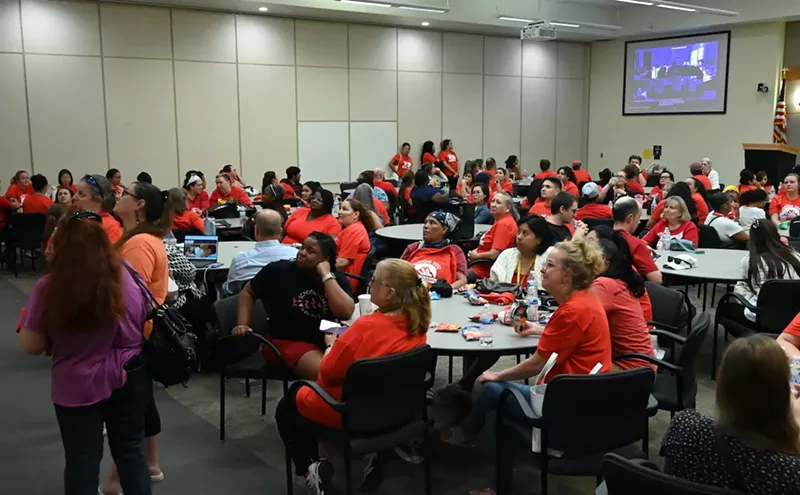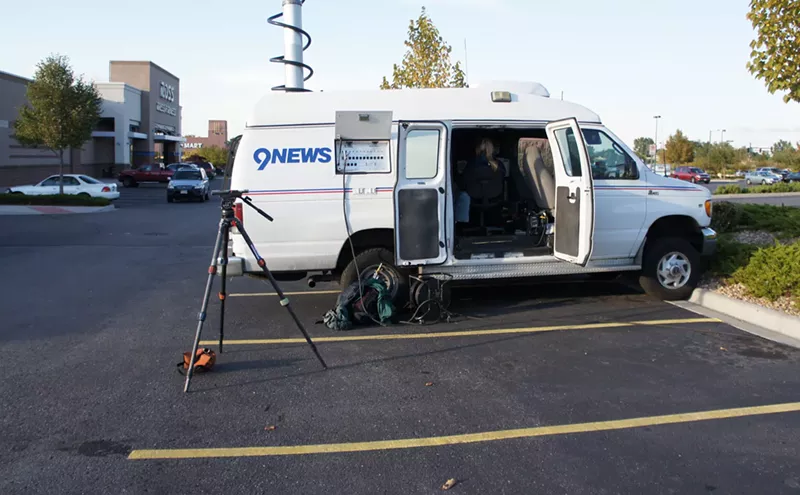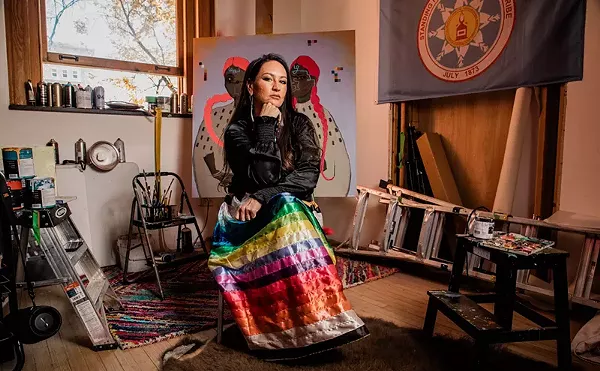The first weeks of March include a pair of significant touchstones for the COVID-19 pandemic in Colorado. Last Saturday, March 5, marked two years since the first case of the disease was confirmed in the state. And two years ago this Sunday, March 13, the virus claimed its first life here. Thousands upon thousands of additional deaths have occurred since then.
The following timeline, containing links to dozens of Westword articles, provides an overview of the fight against the virus during the past 24 months: uncertainty, shock, anger, resolve, frustration and, at present, a renewed sense of optimism that something approaching normalcy is finally within reach.
Retrace the journey so far:
March 5, 2020
Governor Jared Polis announced that an out-of-state visitor to Summit County, a male in his thirties, represented Colorado's first COVID-19 infection. Soon after, a second presumptive-positive case emerged: an elderly female Douglas County resident who had recently returned to Colorado after traveling internationally.
March 13, 2020
"It is just a matter of time before we have our first fatality here in Colorado," Polis said at a press conference — and mere hours later, the Colorado Department of Public Health and Environment confirmed that a woman in her eighties had died from the virus in El Paso County. At the time, the department listed 72 positive cases.
March 25, 2020
With positive diagnoses surpassing 1,000 and the death count at nineteen, Polis issued a statewide stay-at-home order intended to slow the disease's spread, a week after all restaurants in the state had been ordered closed to on-premises dining. Paraphrasing the Bible (and Pete Seeger), Polis said: "There is a season and a time to every purpose under the heaven: a time to be born and a time to die. And I want to share with my fellow Coloradans that now is not the time to die. And we will not let it happen on our watch."
April 3, 2020
After stepping behind a microphone at Centennial's Emergency Operations Center, Polis called on everyone in the state to wear a cloth face mask whenever they went out in public and sought to portray the donning of such garb as fun. "It's human nature to go along with a trend," he said. "So let's make it cool."
April 6, 2020
Around the time that Dr. Deborah Birx, the White House's response coordinator for COVID-19, was identifying Colorado as an emerging national hot spot for the disease, Denver extended its stay-at-home order to April 30. But Polis declared that the state's version of the edict would expire on April 26, despite some deadly serious data from the CDPHE: 150 deaths, along with 5,172 positive cases and 994 hospitalizations.
April 27, 2020
With the expiration of the state's stay-at-home order, Colorado established a new phase of COVID-19 response known as "Safer at Home." Businesses and offices not previously designated as essential began to reopen. (Denver's stay-at-home order finally concluded on May 8.)
May 27, 2020
Restaurants across Colorado got the go-ahead to resume in-person dining service on May 27 — a move that ushered in a period of loosened restrictions and an increasing number of variances from state orders in counties with relatively low virus figures. The COVID-19 case count in late May hovered around 24,500, and the virus was listed as the cause in more than 1,000 deaths.
July 16, 2020
Colorado had extended its state-of-emergency declaration on June 19, despite a flattening of Colorado's COVID-19 curve, partly because of rising case counts in Arizona and neighboring states. In a statement about the emergency edict, Polis acknowledged that "data is now starting to show a reversal of some of our gains."
This observation proved prescient. On June 30, Polis ordered the closure of bars and nightclubs across the state, which had been allowed to reopen just a few weeks earlier — and on July 16, he took an action he'd been resisting for weeks by issuing a statewide mandate for all residents of the state at least ten years old to wear masks in public settings. He stressed that facial coverings shouldn't be viewed through a political lens, but many conservative Coloradans reacted angrily.
July 21, 2020
Fresh CDPHE statistics showed 1,615 deaths from COVID-19, more than 1,700 fatalities of individuals who had the virus in their system at the time of their passing, and 409 new cases. In an attempt to reverse this trend, Polis ordered all alcohol service at restaurants and other nightspots to end at 10 p.m. A month later, the time was switched to 11 p.m.
September 1, 2020
The comparatively stable growth of COVID-19 cases, hospitalizations and deaths wasn't mirrored by a reduction in outbreaks. The CDPHE's September 1 report included 34 new entries, the most in months. Meanwhile, the University of Colorado Boulder sent out an internal memo revealing thirteen positive cases among students discovered after a system to monitor sewage for signs of the virus flagged four dormitories on campus. Two residents of a sorority house associated with CU Boulder tested positive, too.
September 15, 2020
Governor Polis acknowledged that the positivity rate for COVID-19 incidence was on the rise after a long period of stable or declining numbers, with most of the increases linked to college students; CU Boulder transitioned to remote learning the next week as a result. Polis warned that if the situation wasn't brought under control quickly, the potential for greater spread in the community as a whole would increase quickly.
September 25, 2020
The Colorado Department of Public Health and Environment issued a dizzyingly complicated set of guidelines for restaurant operation during cold-weather months. Meanwhile, the CDPHE revealed that case counts hit the highest daily total since July as law enforcement authorities confirmed a spike in pandemic car thefts.
October 12, 2020
The State of Colorado broke through the 1,000-cases-in-a-day barrier for the first time. Deaths in the state specifically from the disease stood at 2,009. Four days later, Denver issued new mask rules requiring face coverings to be worn outside in public settings and limiting gatherings to a maximum of five people.
November 6, 2020
Denver Mayor Michael Hancock, who had previously blamed the city's worsening numbers on outsiders, authorized a "Home by 10" order that required bars, restaurants and clubs to close by that time. Meanwhile, the number of COVID-19 outbreaks statewide was climbing at a stunning rate, with 214 new sites added for the week ending November 11.
November 17, 2020
Polis acknowledged that COVID-19 stats were spiking in Colorado: The 6,583 cases on November 12 was the largest total since the pandemic's start, and 6.79 times higher than the single-day topper of 969 cases during the first wave of the pandemic. As a result, ten to fifteen Colorado counties were likely to qualify for the Red level on the state's COVID-19 dial system — a status that previously called for adopting a stay-at-home order. However, officials at the Colorado Department of Public Health and Environment created a new level, Purple, that allowed such municipalities to stave off lockdowns until their hospital capacity was completely overwhelmed.
November 22, 2020
Even before a feared post-Thanksgiving infections surge, numerous municipalities were on the brink of exceeding their intensive-care-unit bed capacity. Among them were Denver, which had just 25 ICU beds remaining; Colorado Springs, down to fourteen extras; and Weld County, with only three unoccupied. Moreover, modeling studies reported that one out of every 41 Coloradans was a carrier of the virus.
December 6, 2020
Colorado's first gentleman, Marlon Reis, was hospitalized because of COVID-19. He would be released days later, around the time Governor Polis outlined the impending rollout of Pfizer and Moderna vaccines. By mid-December, first responders and other health-care professionals were getting initial doses — an exceedingly hopeful sign.
January 4, 2021
COVID-19 data in December eased from November's peaks, prompting Governor Polis to move Level Red counties on the state's COVID-19 dial dashboard to Level Orange. Among other things, the decision allowed limited indoor dining at restaurants in places where it had previously been nixed.
January 25, 2021
The number of people vaccinated was rising, thanks in part to mass inoculation events such as one held at Coors Field, and COVID-19 stats were getting better, leading to rampant optimism that the pandemic could be largely over by the summer.
February 5, 2021
The good news just kept coming: Restaurants in communities such as Denver were given permission to double capacity from 25 percent to 50 percent. But there was a warning sign: Variants of the disease were starting to make an impact, with cases tripling in a week.
March 19, 2021
The Colorado Department of Public Health and Environment announced impending changes to the state's dial dashboard, dubbed Dial 3.0, that resulted in COVID-19 restrictions being eased in many counties within days.
April 9, 2021
Vaccines were becoming more and more available to the general public. Yet a worrisome trend had developed: Residents of some counties — generally those that supported President Donald Trump in the November 2020 election — weren't rushing to get the shots. The disparity raised the prospect of two Colorados: one largely protected from COVID-19, the other not. And Governor Polis acknowledged that a fourth viral wave seemed to be on the horizon.
May 14, 2021
Promising data related to the effectiveness of vaccines inspired the federal Centers for Disease Control and Prevention to determine that people who'd been immunized could start going into public indoor spaces sans masks. Governor Polis wasted no time cosigning this advice despite indications of ongoing spread, including a new record for outbreaks at K-12 schools in a single week.
June 1, 2021
The CDPHE changed its standard for COVID-19 outbreaks in most settings. While two positive cases within a fourteen-day period would still constitute an outbreak at residential health-care and correctional settings, five would be required everywhere else. After the goalposts were moved, the number of outbreaks tumbled.
June 22, 2021
A new worry: A viral mutation known as the Delta variant began circulating in places such as Mesa County, on Colorado's Western Slope; by the second half of June, Colorado had the second-most cases in the country of the more transmissible and dangerous strain. The Delta variant would quickly supersede the original virus and dominate new infections statewide.
July 8, 2021
Despite the rise of Delta, Polis delivered a video message in which he announced that he had rescinded all health emergency executive edicts regarding the virus in favor of what was dubbed the Colorado COVID-19 Disaster Recovery Order, branded as the "Colorado Comeback." During the clip, he managed to avoid using the phrase "Mission accomplished," George W. Bush-style, but it had the tone of a victory declaration — one that would prove premature.
July 20, 2021
With the Delta variant running rampant, state officials advised schools to require masking indoors for unvaccinated individuals over the age of two for the 2021-2022 school year, particularly for those living in higher-risk areas. But the ultimate decision was left to local authorities, and in Mesa County, which at the time had by far the most confirmed Delta variant cases in the state, the local school district determined that face coverings wouldn't be required for anyone, vaccinated or not.
July 27, 2021
The CDC reversed course in the face of the Delta variant upswing, recommending that vaccinated and unvaccinated individuals should start wearing masks again inside public places. But Polis didn't revive the statewide mask mandate, thereby allowing individuals to decide whether they should cover their face or not. Mask use began to tick up in many places, but the majority of people decided to skip the precaution.
August 17, 2021
The combination of the Delta variant and lagging vaccinations — promotions such as $1 million drawings and $100 Walmart gift card giveaways saw only modest success — sparked a significant COVID-19 comeback. By mid-August, hospitalizations for the disease were at their highest point since January. Meanwhile, outbreaks at outdoor live events such as a series of String Cheese Incident concerts at Red Rocks in July were followed by cancellations of other gatherings — among them the planned return of Denver GoTopless Day.
September 1, 2021
El Paso County passed Mesa County for the most confirmed Delta variant cases, Delta Plus sublineages began turning up across the state, and the Tri-County Health Department told Douglas and Adams counties that they couldn't opt out of a rule requiring kids to wear masks in class. As of September 1, 7,446 people had died from COVID-19 in Colorado.
September 8, 2021
Concerns were rising in regard to the number of so-called breakthrough cases among people who'd been vaccinated. State health department statistics showed that such infections more than quadrupled from April 1 to June 30 and exceeded 17,000 by the end of August.
September 29, 2021
COVID outbreaks started spiking again as well, and many businesses and facilities where they took root had been through the drill before. The CDPHE's September 29 update revealed that of 437 sites under active investigation, 252 had experienced at least one prior outbreak.
October 13, 2021
Even though Colorado's hospital stats had hit heights not seen since 2020, vaccination rates were stagnating. Against that backdrop, Polis advised people who wanted to get shots but happened to cohabit with anti-vaxers to do so without telling them. Meanwhile, grocery stores and other major retailers experienced random shortages of the sort that would plague the metro area for months.
October 21, 2021
During a press conference, Polis dubbed the latest COVID stats "alarming," in part because only 120 intensive-care-unit beds were open statewide owing to a sharp increase in patients hospitalized for the virus (the total would fall to under 100 in early 2022 before rebounding). He warned that crisis standards of care of the type instituted as part of the early pandemic response could return.
November 9, 2021
Colorado's COVID data continued to worsen: During the week ending November 8, the state registered 20,791 confirmed infections, 1,152 new hospitalizations and 241 deaths among cases, up by 69 in a seven-day period. Polis soon dubbed the scenario "unsustainable."
November 23, 2021
Denver mayor Hancock and public-health officials representing several metro counties (with the glaring exception of Douglas County, which had formed its own health department in protest against safety protocols) announced what was shorthanded as a mask-and-vax mandate to fight COVID-19. The rule, scheduled to go into effect in Denver, Jefferson, Adams and Arapahoe counties the next day, called for face coverings to be worn in public indoor settings unless the business or venue in question had made arrangements with their particular county to check a patron's vaccine status before allowing entry.
December 7, 2021
A new wild card was dealt to Colorado and the rest of the planet: the Omicron variant of COVID-19, which proved to be more transmissible than any strain that had come before it. Even though only two cases linked to Omicron had been confirmed in Colorado as of Polis's December 7 press conference, he predicted shortly thereafter that it would soon become the dominant version of the disease in the state — and he was right. Days later, Colorado deaths from COVID-19 surpassed 10,000.
January 4, 2022
The viral surge fueled by Omicron prompted Kathy Howell, the chief nursing officer at the University of Colorado Hospital, to predict that January was "probably going to be the scariest point of the pandemic." A week later, Colorado blew past one million confirmed cases, thanks in part to 19,672 registered on January 6 alone, and the number of people hospitalized for COVID soared over 1,500.
January 31, 2022
New COVID case counts started to dip toward the end of the month but were still registering at between 5,000 and 10,000 new infections per day. Moreover, the CDPHE acknowledged that many cases simply weren't part of the official tally, since rapid test results weren't included and many people with relatively minor symptoms, as was common with Omicron, were simply choosing not to confirm their diagnosis. Nonetheless, Hancock announced that Denver would allow its mask mandate for public indoor settings to expire at the end of the day on February 3.
February 25, 2022
COVID cases and hospitalizations tumbled quickly from their January highs, suggesting that the Omicron variant had largely run out of steam. Seizing on this trend, Polis announced his reelection bid via messaging that barely mentioned the pandemic shortly before staging a press conference in which he declared the health emergency related to COVID-19 to be over and encouraged Coloradans — particularly those who are either fully vaccinated or survived a bout with the disease and now had a degree of immunity against it — to move into what he repeatedly referred to as "the next chapter." That he'd essentially done the same thing the previous July only to see the situation rapidly deteriorate didn't appear to harsh his vibe.
March 8, 2022
New data from the CDPHE revealed that the state had achieved historic lows in new cases (there were just 46 statewide on March 6) and hospitalizations (February 27 saw only ten hospitalizations for the virus). The numbers inspired hope that at last, Colorado might finally be at the long-desired light-at-the-end-of-the-tunnel moment. But the toll has been horrific. As of today, March 11, the death toll stands at 12,701 for Colorado, more than 964,000 for the United States, and 6.03 million globally.
To read all of our COVID-19 posts from the onset of the crisis through today, go to Westword's coronavirus archive.

Audio By Carbonatix
[
{
"name": "GPT - Billboard - Slot Inline - Content - Labeled - No Desktop",
"component": "23668565",
"insertPoint": "2",
"requiredCountToDisplay": "2"
},{
"name": "STN Player - Float - Mobile Only ",
"component": "23853568",
"insertPoint": "2",
"requiredCountToDisplay": "2"
},{
"name": "Editor Picks",
"component": "17242653",
"insertPoint": "4",
"requiredCountToDisplay": "1"
},{
"name": "Inline Links",
"component": "18838239",
"insertPoint": "8th",
"startingPoint": 8,
"requiredCountToDisplay": "7",
"maxInsertions": 25
},{
"name": "GPT - 2x Rectangles Desktop, Tower on Mobile - Labeled",
"component": "24956856",
"insertPoint": "8th",
"startingPoint": 8,
"requiredCountToDisplay": "7",
"maxInsertions": 25
},{
"name": "Inline Links",
"component": "18838239",
"insertPoint": "8th",
"startingPoint": 12,
"requiredCountToDisplay": "11",
"maxInsertions": 25
},{
"name": "GPT - Leaderboard to Tower - Slot Auto-select - Labeled",
"component": "17676724",
"insertPoint": "8th",
"startingPoint": 12,
"requiredCountToDisplay": "11",
"maxInsertions": 25
}
]

